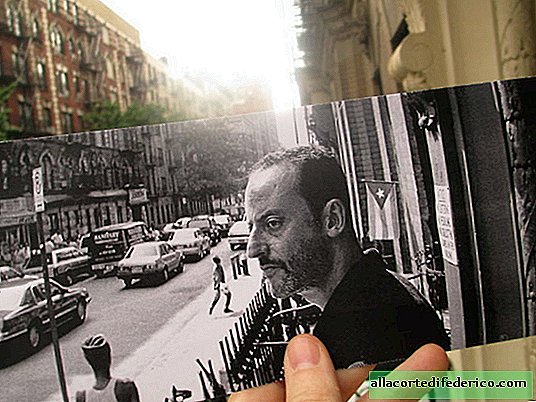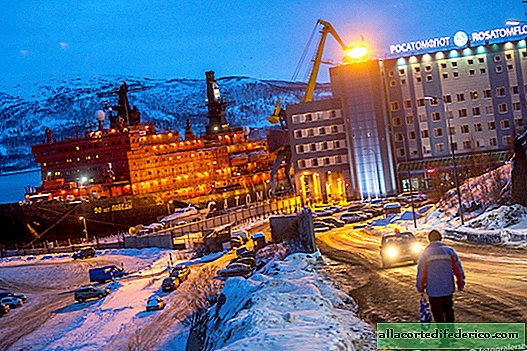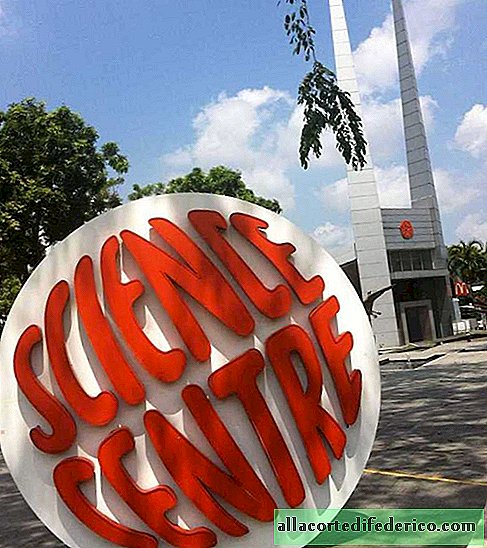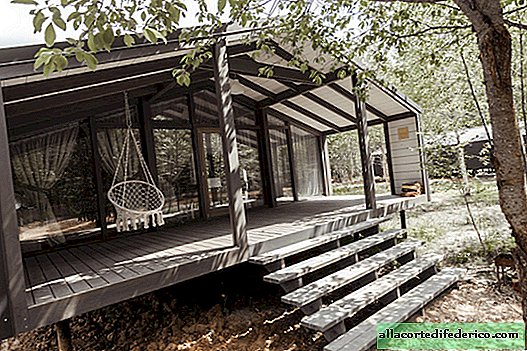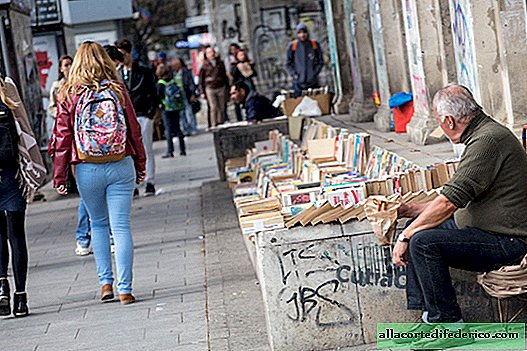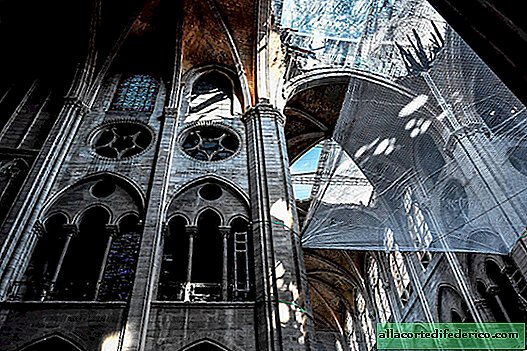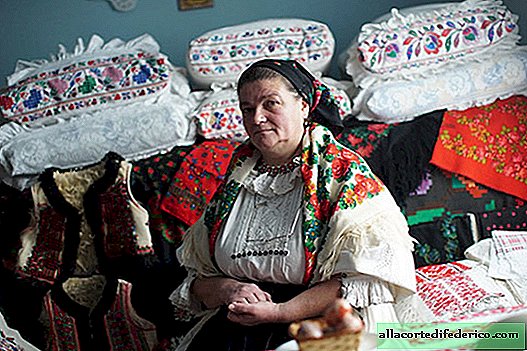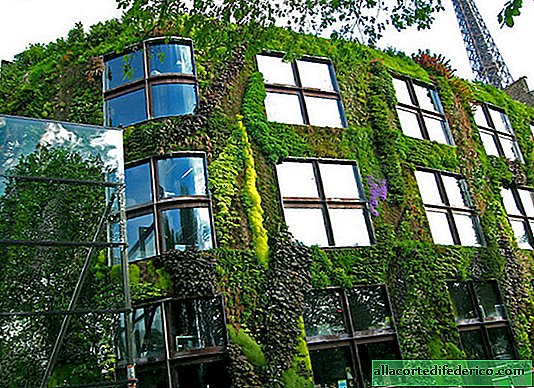American prison. Lite version
At the word prison immediately recalls the Bastille with its historical revolutions, Sailor silence, Alcatraz, Guantanamo Naval Base and 10 maximum security colony in the Tver region. To be honest, I was somewhat discouraged when I saw a neat building with a garden, without a fence, barbed wire and guards with machine guns.
California, along with 7 other US jurisdictions, is among the states with the most crowded prisons. There are many people there (California is one of the most populous states of America), so they themselves are happy to get rid of some prisoners. At the same time, everyone understands that the presence of small criminals and offenders, together with inveterate bandits, threatens that small criminals will begin, as they say, to "live by concepts" and psychologically will not be able to return to normal life.
Last year I went to an American prison (as a guest). My childhood friend and former classmate, about ten years ago, moved to permanent residence in California and is now a successful realtor. He bought an old building in one of the less prosperous areas near San Francisco, repaired it, expelled termites, and then handed it over to the state under jail, from which he now receives a monthly income that exceeds the cost of market renting the same housing to private individuals.

In the report I use the word prison, but it would be more correct to say the colony. At least in Russia only especially dangerous criminals and repeat offenders are held in prisons. Their conditions of serving sentences are different from other places of deprivation of liberty, as convicts are kept in prison in cells and not in dormitories, as in correctional and educational colonies.
After returning to Russia and viewing photos, I became interested in the topic of how the prison system is organized in different countries. Prison as a system of punishment (and later - correction) existed in ancient times, then - mainly for the maintenance of criminals, prisoners of war and debtors.
America has contributed quite a bit to the development of the modern penitentiary system. Today, one in fifty Americans is involved in the work of the prison system - all these people serve, treat, protect and feed prisoners. The industry’s annual turnover exceeds $ 70 billion.
View of the prison from the roadway.

In the United States, there is a multi-stage penitentiary system, with prisons of different classification and different levels of security, depending on the severity, duration of the crime, as well as the state and county. The American justice system implies the so-called “3 sticks rule”: if someone has been issued more than 2 warnings, fines, administrative penalties or suspended sentences, then for the third time a judge must pass a sentence and give the person a real prison term, even if all 3 times a person stole a chocolate bar in a supermarket or retired with a girlfriend in the park.
They told me that even if you stopped on a deserted highway as needed, and there seemed to be nobody around, but at that moment a policeman passing by will see you, then everything falls into the category of “demonstrating his genitals in a public place” and is administratively punishable. A police officer himself would often be happy to let him go, but if his surveillance camera filmed a "terrible crime" committed in the night, then you must issue a warning and administratively punish him. In America, 12% of all prisoners are convicted of sexual offenses - rapists, pedophiles, and those who stopped to help at the wrong time and in the wrong place fall here.
Locals in the suburbs of San Francisco are suspicious. Exclusively to dilute the text with a photograph.

Due to significant overcrowding in prisons, state authorities are campaigning for “unloading” prisons by placing non-dangerous criminals (often victims of the “3 sticks rule”) in county prisons or halfway houses. The owner of just such an "intermediate house" is my friend.
In each room, up to three prisoners can live simultaneously.

The criminals live in such houses for 3-4 months, they cannot leave the house without permission. At the same time, as I already wrote, there are no guards, lattices and shepherds - in this way willpower is trained, and at the same time people are adapted to their further return to society.
After that, after 3-4 months, the prisoners are transferred to what is closest to the conditions of a free life and reminds one of the story from the movie "Shawshank Redemption", when one of the main characters, Red, played by Morgan Freeman, was released ahead of schedule . The state allocated him an apartment and provided the opportunity to work in a supermarket. My friend’s house is an intermediate link between a classical prison and a more or less free life on the eve of complete liberation.

Prisoners in such houses do not work. Once a day they are accompanied by a manager, who is also a supervisor, for a walk. In general, only one observer lives in the house. Incidentally, he was a former prisoner himself and also went through a system of "intermediate" houses.

9 people live here (according to the rules, you can not settle more than 3 people in one bedroom), but there is a similar house with 10 bedrooms nearby, so, according to my calculations, about 30 people live there. Everyone has normal clothes, they bring food once a week in a big truck, and the prisoners wash themselves.

Everything looks neat and very presentable. And before they allowed prisoners to be settled here, they had to conclude an agreement with the authorities and make repairs in accordance with their clear recommendations. Design, color of walls, layout - all this is thought out by prison psychologists and must be clearly observed.


The life of prisoners in such a house is regulated by a schedule and a bunch of rules that hang in a conspicuous place.

Living room.

Every day a cook arrives who prepares food for everyone. The content of each prisoner costs the state in the amount of about 1500-2000 dollars a month, which is cheaper than the content of the same criminal in a regular prison. This is another reason why such houses are so beneficial to the state, in addition to adaptation advantages.


Backyard.

Dining room in a big house.

Naturally, the neighbors are not very happy with such residents on their street (it’s always easier to be abstractly socially responsible, but when it comes to business ...) they even wrote a collective letter of complaint that they did not want to be in close proximity with criminals who at any time they can leave their home. But in response to their complaint, the prison lawyer said that this would be regarded as a discriminatory act against socially disadvantaged groups of the population (and prisoners, like disabled people, veterans, etc., whatever one may say, are a socially disadvantaged social group). Thus, the chances of satisfaction of the request from the neighbors were equal to zero. In America, the topic of discrimination sometimes takes on hypertrophied dimensions.
Garden furniture, gym and car neighbors.

Volleyball court and neighboring parking.

Information from Wikipedia:
According to some estimates, in 2006 at least 9.25 million people were detained worldwide. However, the actual number of prisoners is probably much higher, since reliable information from a number of countries is lacking, especially with authoritarian political regimes.
In absolute terms, the United States is currently the leader in terms of number of prisoners; in this country, more than 2.19 million are in custody. Although the US population is less than 5% of the global population, about 20% of the people behind bars are in American prisons. In 2002, the number of prisoners in Russia and China also exceeded 1 million. However, in the future, the number of Russian prisoners decreased and amounted to 891738 people in February 2008, that is 629 per 100,000.
As of February 1, 2014, 674.1 thousand people were kept in penal institutions, 1859 people were serving life sentences. The United States of America also holds the championship in the specific number of citizens behind bars: as of October 2006, 738 people out of every hundred thousand were serving time. were detained on suspicion of committing a crime, or were in custody awaiting trial. The cost of keeping prisoners varies across states. In the state of New York in 2010, the cost of maintaining one prisoner per day was $ 210 (or $ 6300 per month).

As far as I know, in Russia there are no similar institutions aimed at adapting petty criminals to return to life in society. But I could be wrong. According to my friend, thanks to the “intermediate houses” in his state, the number of cases of relapse falls from 70 to 20%. However, I haven’t found any official figures on this subject. He receives for renting such a house about $ 2700 a month, which is much more profitable than renting this house to ordinary tenants.
In the United States, not all prisons are state-owned. There are whole prison corporations that own or manage prisons. About 10% of US prisons are private enterprises.


